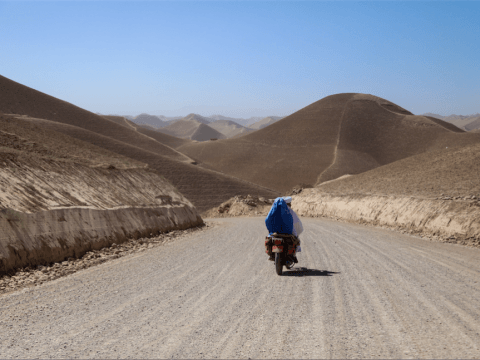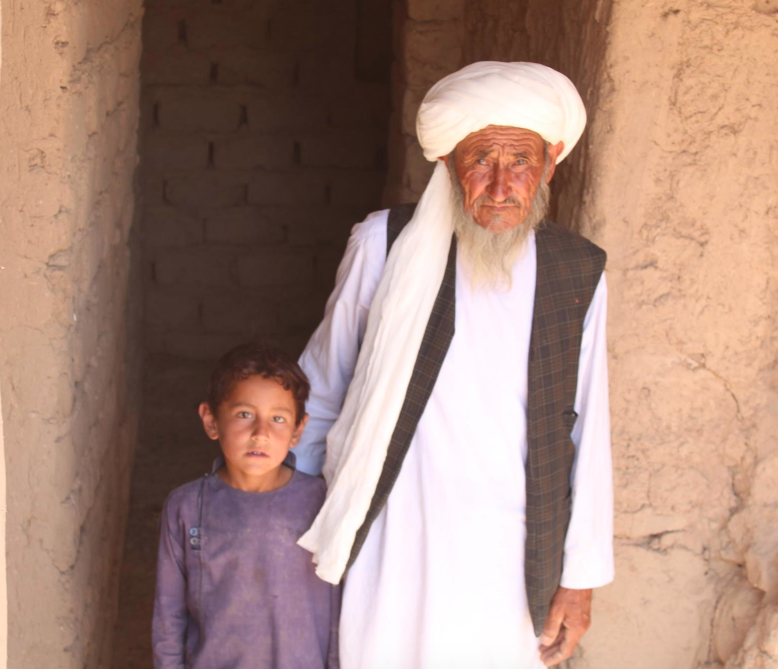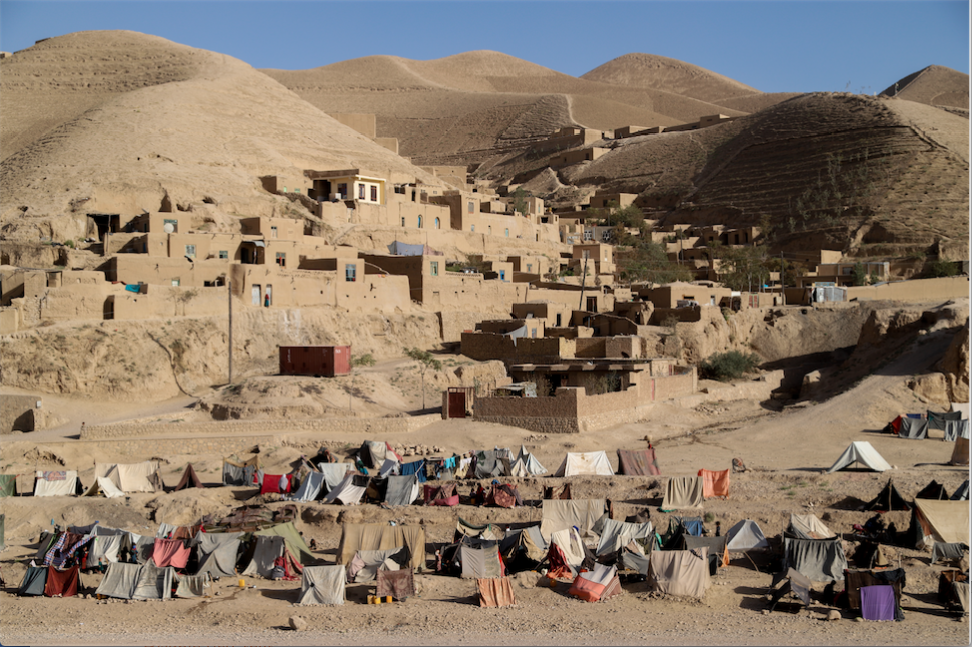The Barren Fields of Badghis

You can read the deep wrinkles on Sakhi Dad’s face like a book, spelling out the ups and downs of a life long-lived. As the only breadwinner for his family of 14, Sakhi’s perennial concern has always been to put food on the table. One of his family members left to seek work in Iran six months ago when the drought in Badghis province reached its peak.
Sakhi says that since the drought started the labour rate in his village fell from 350 Afs (USD $5) to 200 Afs [USD $2.8] per day, during which time most of his fellow villagers have either become internally displaced or have migrated to nearby countries to work for basic survival.
Sakhi Dad with his grandson.
Sakhi is a wheat farmer. “I inherited the farming occupation from my father,” he says, his voice shaky. “I have 25 jeribs of land [five hectares]. This year I cultivated 720 kilograms of wheat from my dried-up land, down from 9,600 kilograms last year.” His harvest was almost nonexistent and the crops and earth are burnt a pale yellow by the relentless sun. Sakhi murmurs and nods his head. He adds that two of his donkeys died of malnutrition. “They perished in front of my eyes. I couldn’t do anything for them. They died of hunger and thirst.”
Prevailing drought conditions in Badghis from last year destroyed the winter harvest and also wiped out the new crops that were planted for the spring growing season. It is estimated that 60 per cent of livestock have either perished or been sold off at minimal value, and about 40 per cent of wells have gone dry. The drought has recently resulted in the displacement of around 20,000 people from Ghor and Badghis provinces, many of whom have fled to Herat with the hope of finding food, water and medical care.
It wasn’t always like this. Sakhi remembers how “in the past, we could earn up to 10,000 Afs [USD $142] per month through the sale of agricultural products such as melon, wheat, sesame and more. I was so proud to see all of those crops come from my land. But this year…we have nothing to sell or to eat, only a dry land with dried bushes.”
Sakhi can’t recall a similar time during the last ten decades when people either lost or were forced to sell the animals and livestock that constituted the only source of income for an entire extended family.
Thousands of families have fled to the provincial capital Qala-i-Naw, or further west to Herat city due to drought and internal conflict.When there are such drastic shortages of feed for herds and farm animals, the market rate for livestock takes a dive. In certain cases people have even given away their animals for free.
In a survey carried out by the World Vision Afghanistan in Badghis province, the team learned of a man who transported all of his farm animals, his family’s only source of income, to another province for auction. After this gargantuan effort he wasn’t able to sell a single animal because they were so malnourished.
This is the kind of story you hear almost everywhere in Badghis province, of profound impacts on peoples’ basic abilities to survive. Now is the time for governmental entities and humanitarian organisations to pay attention. If action isn’t taken immediately, countless Afghans will have no other choice but to migrate to neighbouring countries or face internal displacement, leaving formerly self-sufficient farmers like Sakhi with nothing to show for a lifetime of honest, patient work.

